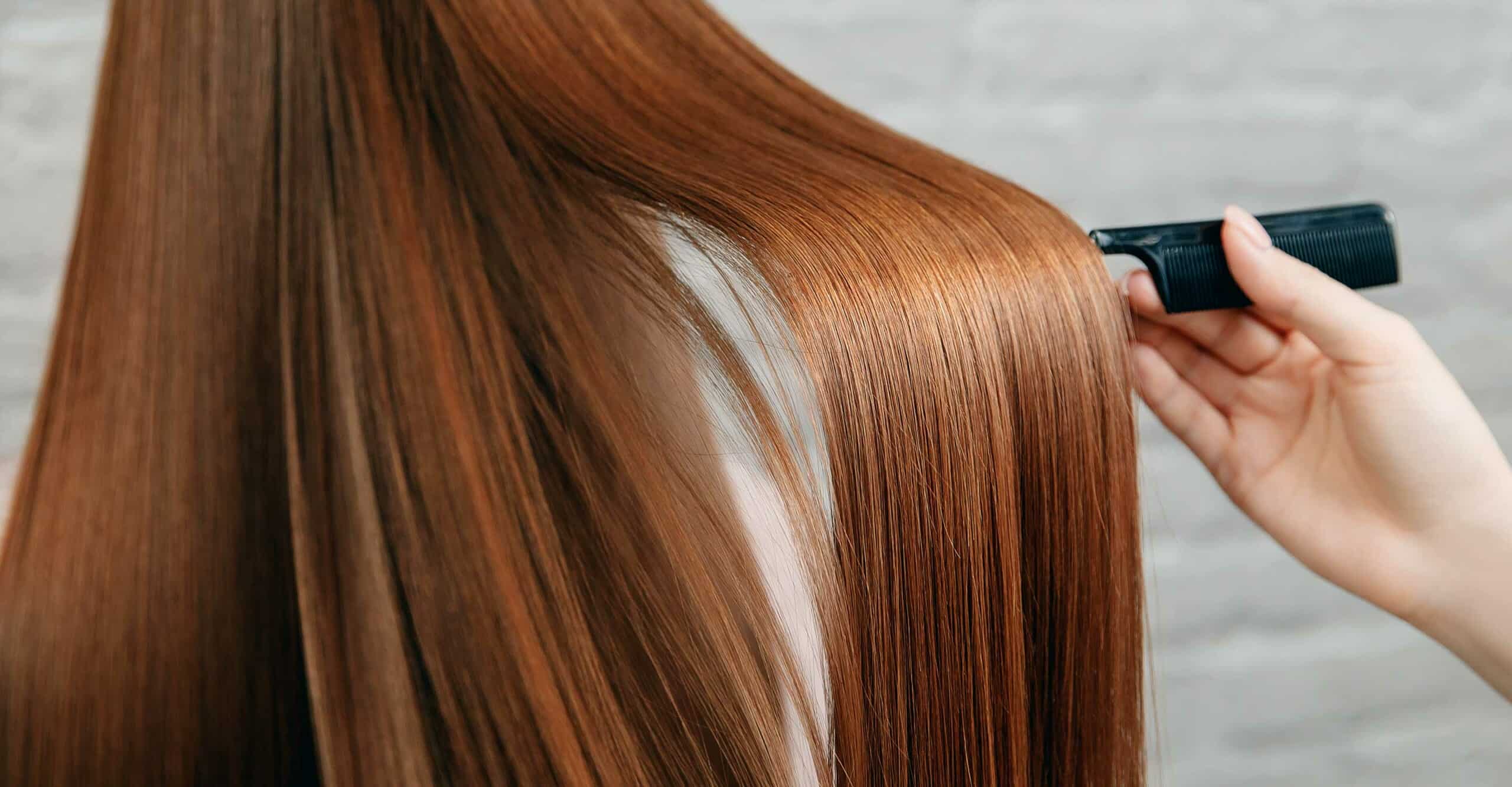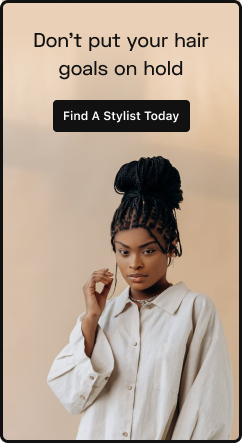Hair extensions are a must for anyone looking to make a hair statement without making a big commitment to a specific look. In just a few hours you can achieve a new style, whether it’s hair length, color, or volume transformation, there are many types of hair extensions you should try.
Getting hair extensions requires some important decision-making. It’s one thing to decide to get hair extensions, but it’s another to decide on the type of hair extensions you want.
Having a wide range of options to pick from can be overwhelming, especially when you have specific needs. However, in this guide we cover things from hair extension installation techniques, how long extensions last, to the pros and cons of each type so you can make the right decision.
Clip-In Hair Extensions
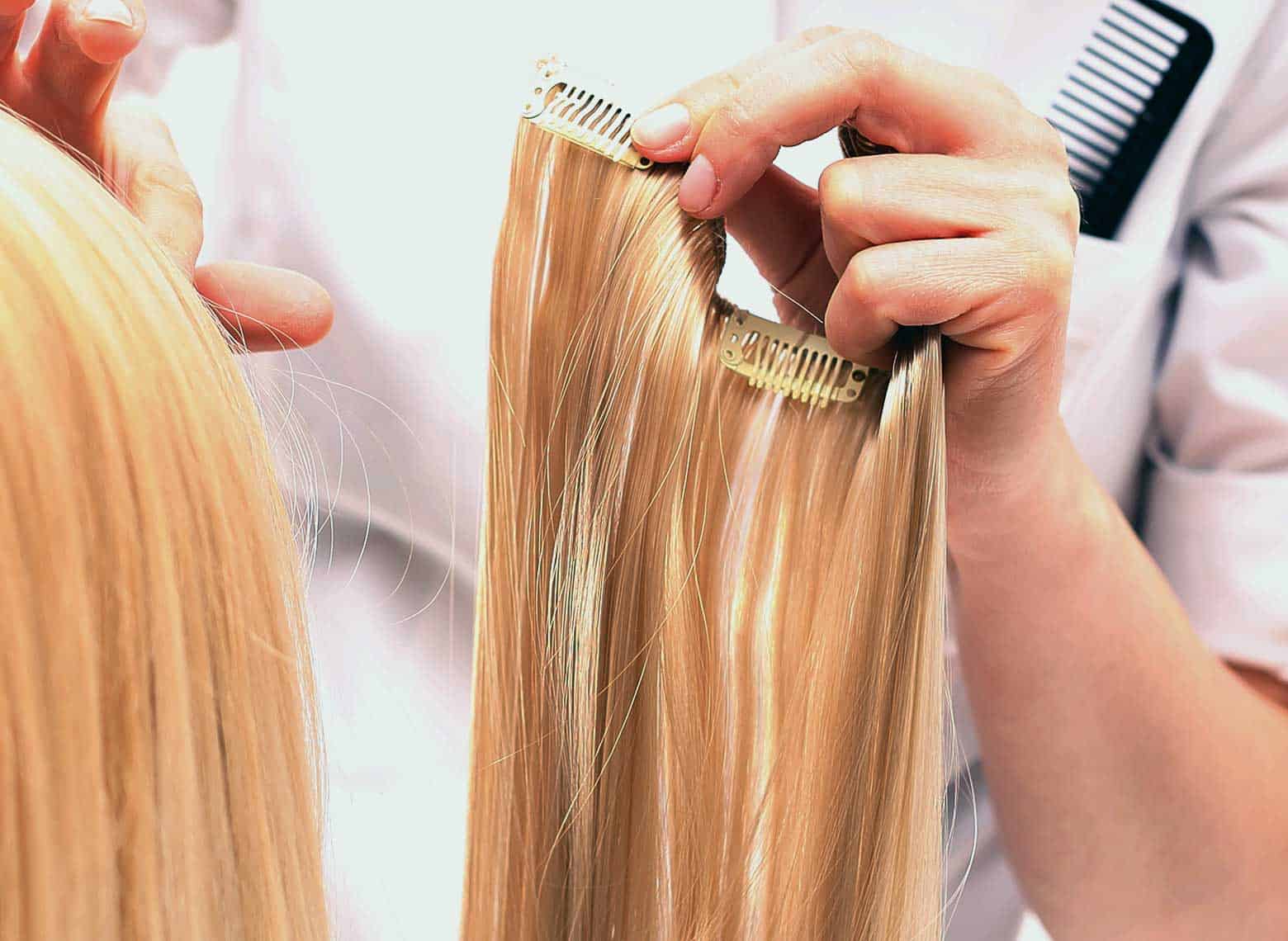
Clip-in hair extensions are popular because they’re easy to use and remove. Use them when you want to amp up your look with a temporary hair extension and simply remove before bed to properly maintain the extensions.
Installation
This type of hair extension has sewn-in clips that are easily attached to the base weft of the hair. They take between five and 15 minutes to install and can be done from home. With proper care, quality clip-ins can last for up to six months or longer.
Pros of Clip-In Hair Extensions
Clip-in extensions require less commitment when compared to other hair extension types. You can safely remove them at home without going to a salon. Unlike other methods, it doesn’t require heat or glue, which is ideal for anyone steering clear of methods that cause breakage. They’re also much more affordable compared to the price of other hair extensions.
Cons of Clip-In Hair Extensions
Keeping clip-ins on for too long may result in traction alopecia because they add weight to your hair. Removal also creates an extra step in your nighttime routine since you always need to remove them before bed. Clip-ins aren’t a great option for thin hair since they can slip out.
Tape-In Hair Extensions
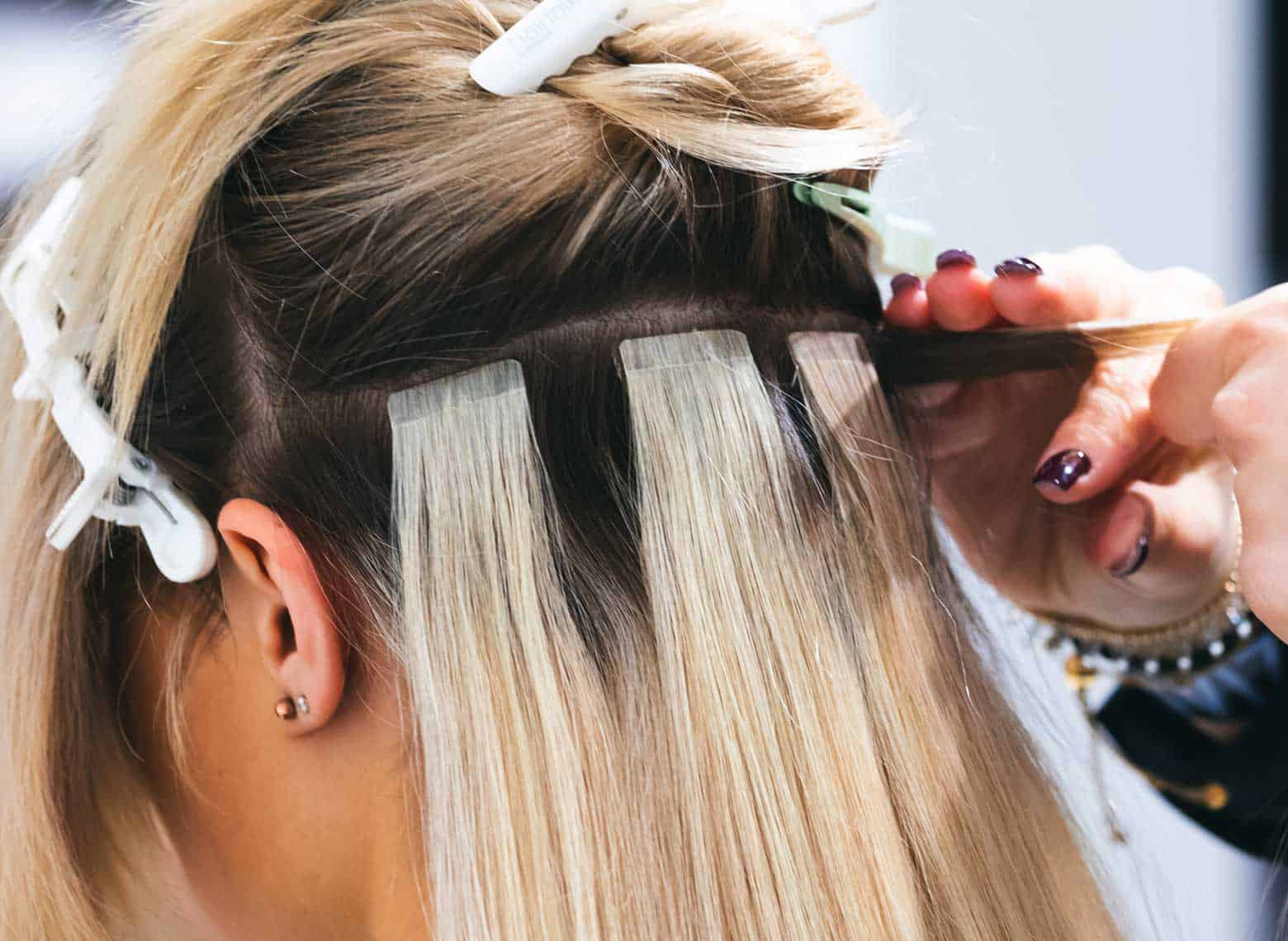
Another type of hair extension are tape-ins. This type of hair extension has a tape that’s one inch in width and secured to the hair with an adhesive.
Installation
Installation takes between 45 and 60 minutes. Tape extensions will typically stay on longer than clip-ins, but you should have them removed within five weeks to reposition them. Unlike clip-ins, you should go to the salon to have your stylist reposition your hair extensions. Your stylist will help you blend them with your natural hair during these appointments.
Pros of Tape-Ins
Tape-ins work for most hair types and are gentler than other methods, making them an especially great option for those with thin hair. They’re also affordable and reusable. Tape-ins are among the more flattering options for people with very short hair who want to ensure they can hide their extensions.
Cons of Tape-Ins
Tape-ins can slide off if you use oil-based hair products. Ask your stylist for recommendations for products that are safe to use with this type of extension.
Sew-In Hair Extensions
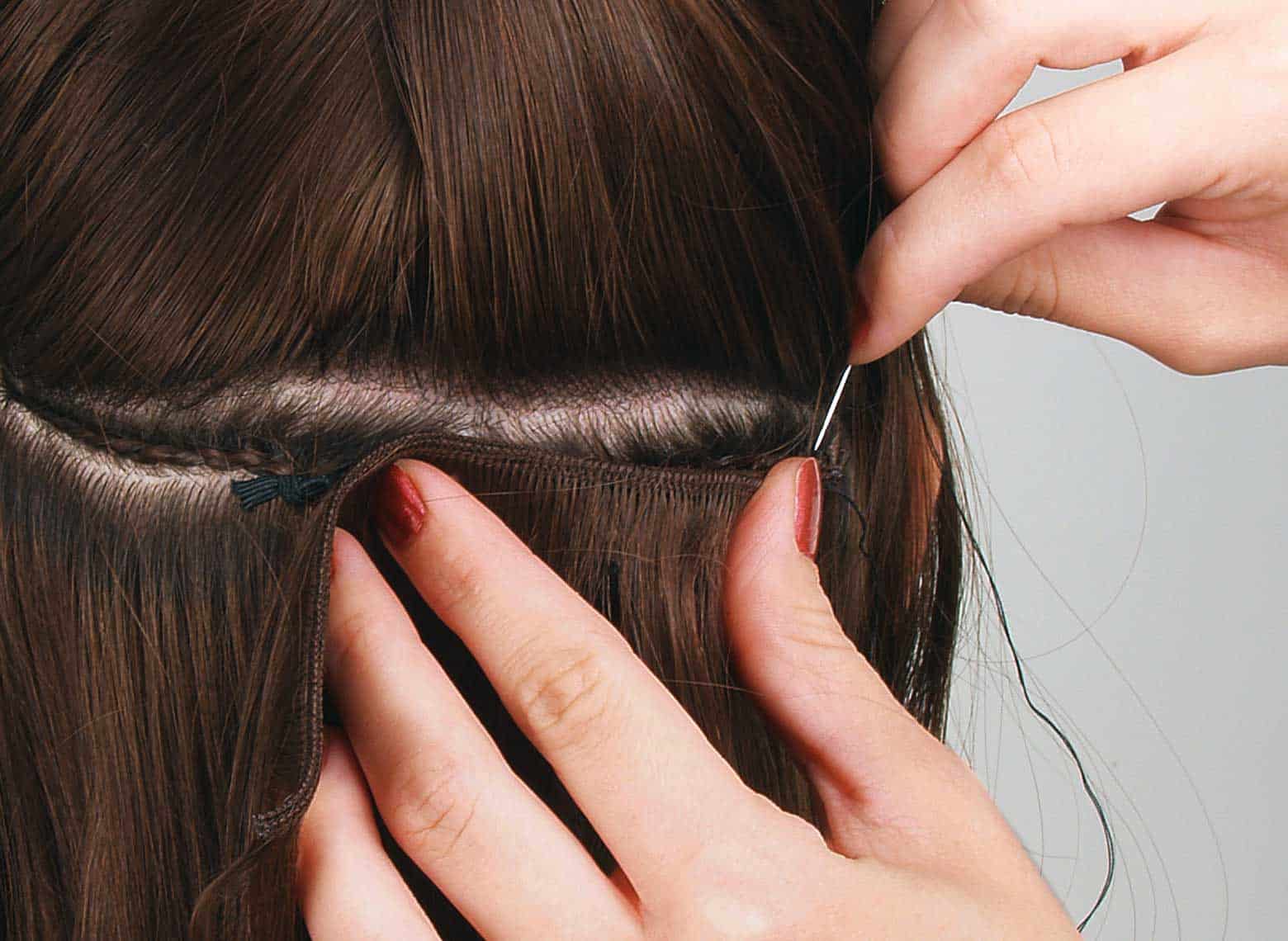
Sew-in hair extensions are popular because it’s one of the longest lasting and secure methods. Sew-ins can get pricey and take some time to install, but the results are worth it.
Installation
Your natural hair is first braided down in a pattern that fits the style you want. A stylist then sews extensions into the braids with a needle and thread. The installation will typically take one to two hours, and they can last as long as 8-10 weeks without repositioning.
Pros of Sew-In Extensions
Sew-ins are a great option if you want a long-lasting style without using heat or hair balm. Sew-ins are secure, so you won’t have to worry as much about your extensions falling out compared to other methods. Sew-ins also keep your natural hair tucked away and protected.
Cons of Sew-In Extensions
This method can lead to breakage of your natural hair if the extensions aren’t properly installed. Braids can cause a bit of tension if they’re too tight or if the sew-in is installed too tight. If this happens, let your stylist know so they can loosen the weave. You shouldn’t leave the salon in pain.
Glue-In Hair Extensions
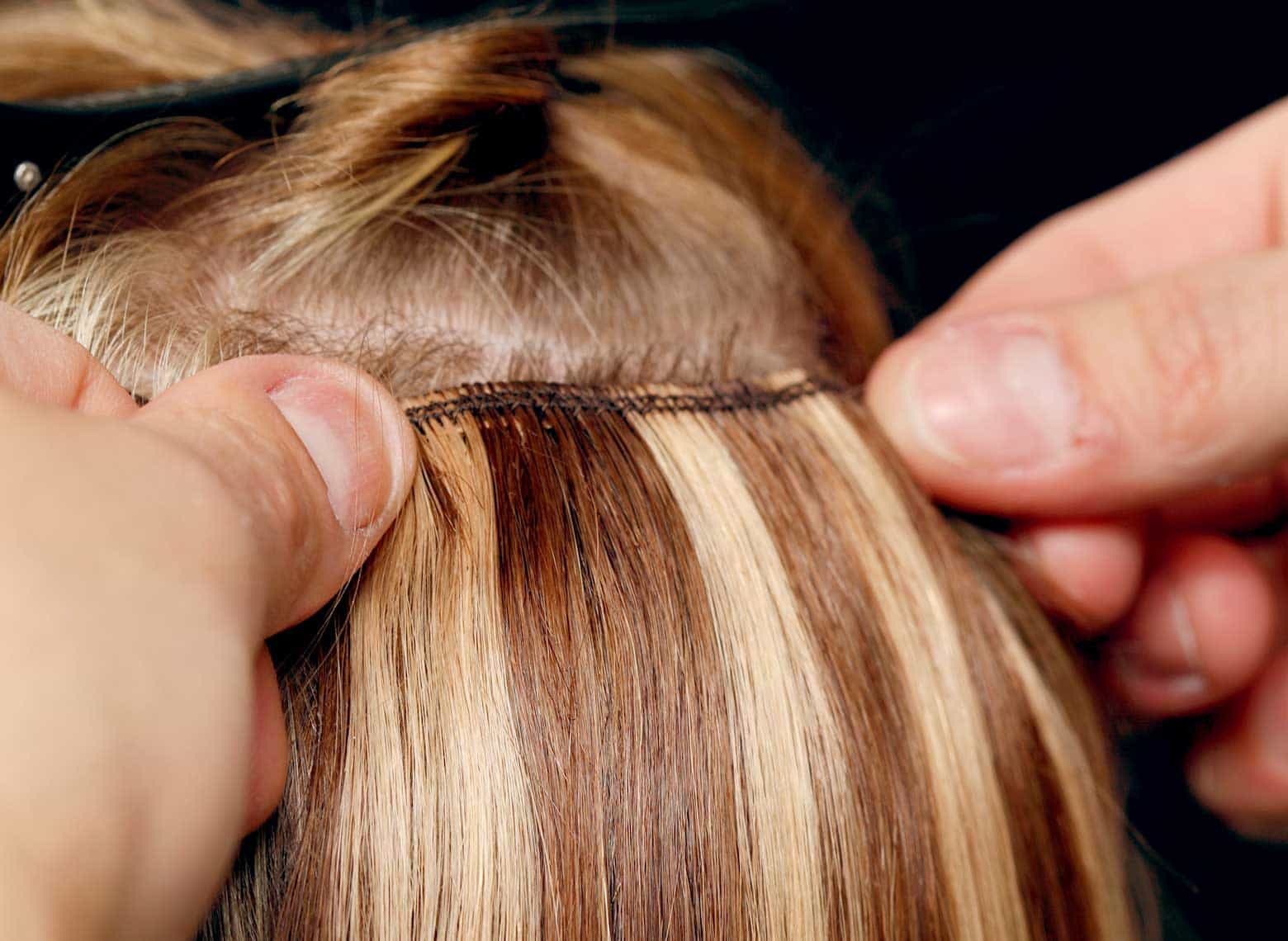
Glue-ins are another short-term hair extension method that uses hair balm to install the wefts.
Installation
With this method, your stylist applies hair balm to the base of the hair weft and attaches it to your hairline. Installation lasts about 50 minutes. You can remove these extensions with an oil-based solvent. Glue-in extensions can last from four to eight weeks.
Pros of Glue-In Extensions
Opt for glue-in extensions if you don’t want to commit to a long-term style. This method is also great if you’re looking to save some money and reuse the extensions.
Cons of Glue-In Extensions
The glue-in method can damage your hair if the hair balm is excessively applied or the extensions are incorrectly installed or removed. This hair extension type also requires you to avoid oil-based products to maintain the integrity of the hair balm. Otherwise, your extensions can start to prematurely fall out.
Fusion Hair Extensions
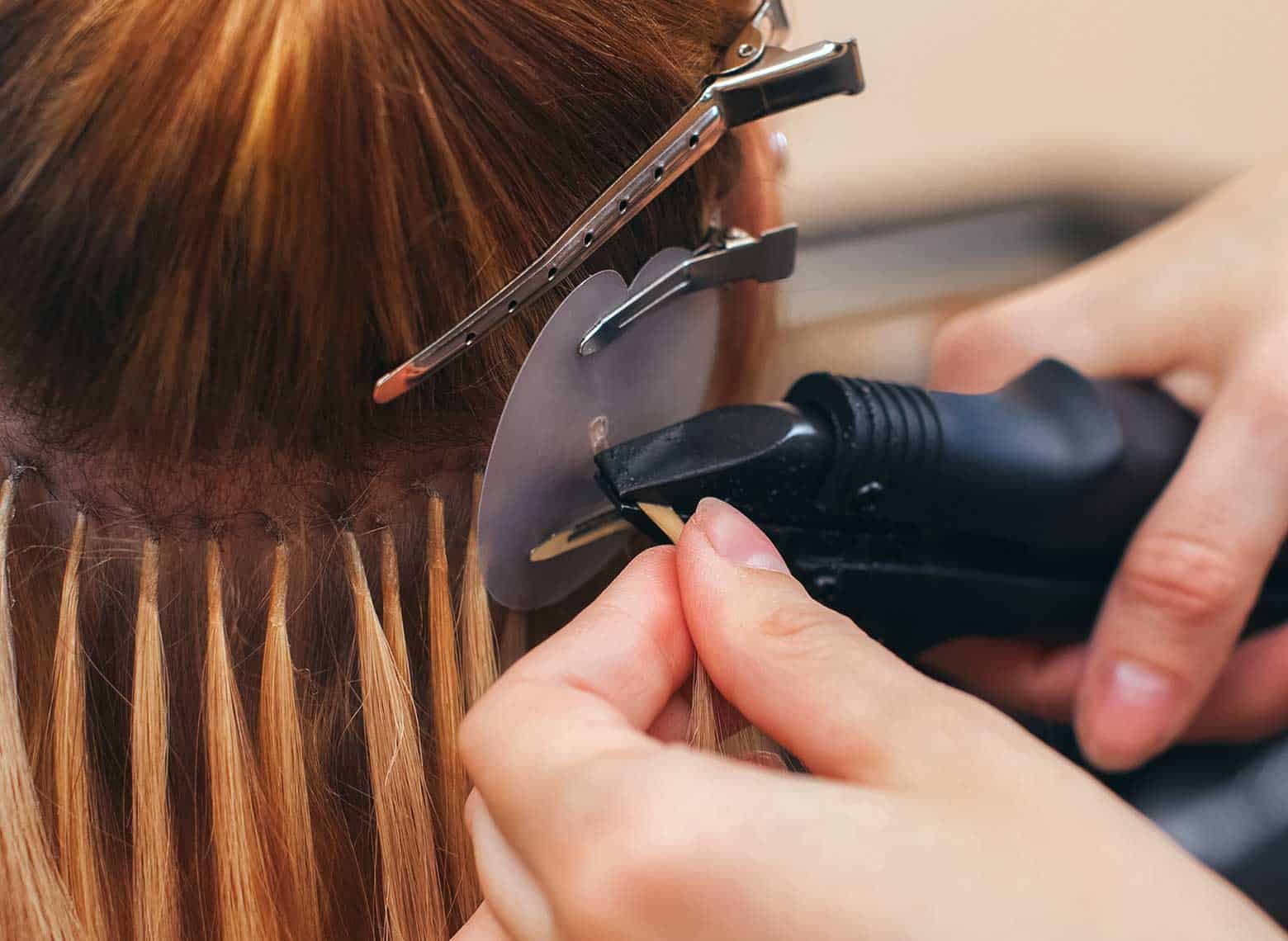
Fusion hair extensions are usually referred to as pre-bonded or hot fusion hair because of the installation process. This hair extension is fused into the natural hair with keratin glue and a heat clamp. These extensions take a few hours to apply, but also last a long time.
Installation
A stylist will use keratin bond to affix individual strands to your natural hair. Then, they’ll use a heat clamp to bond the extension to the natural hair. The overall installation will typically take between two and four hours, depending on the stylist’s level of expertise. After installation, you’ll need to see your stylist after eight to 12 weeks to reposition your extensions. Fusion hair extensions can last up to four months if properly installed and maintained.
Pros of Fusion Hair Extensions
Fusion hair extensions blend well with your natural hair and secures well to most hair types, especially thick hair. This is good news if you want a long-lasting look. You can also achieve many different styles with fusion hair extensions.
Cons of Fusion Hair Extensions
These extensions take a long time to install. If you’re not a fan of sitting in the salon chair for a while, this type of extension isn’t the best choice for you. This also isn’t a great choice if you have damaged hair or otherwise don’t like using heat and hair balm on your hair.
Microlink Hair Extensions
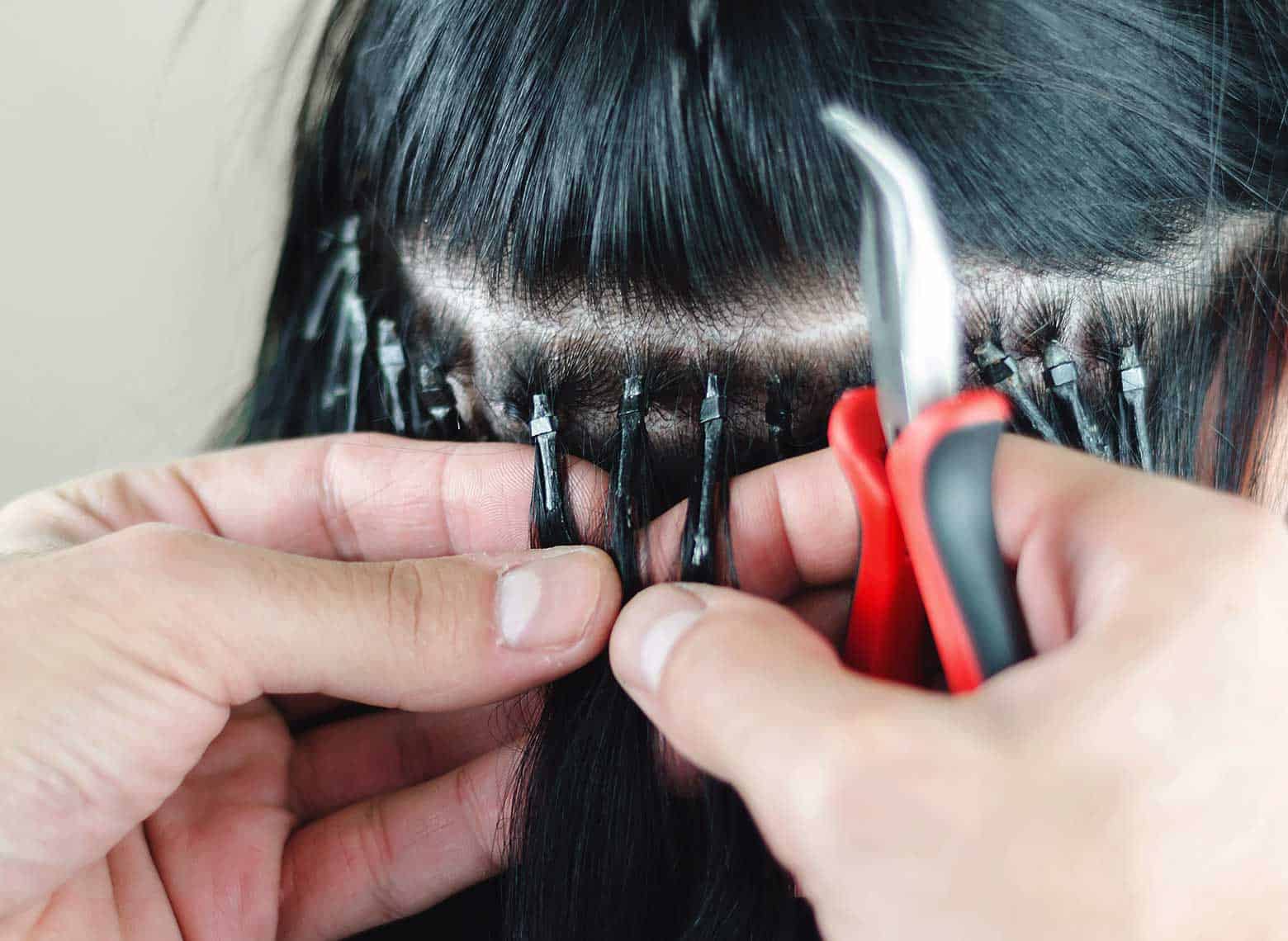
Also referred to as I-tip or cold fusion hair extensions, this method involves individually attaching tiny wefts of hair extensions to small sections of natural hair.
Installation
To install, the stylist threads a microbead into your hair, threading the hair extension through the bead. Once the extension is secured, they’ll use a hair plier to clamp the individual tips with microbeads.
The tips are patterned in neat rows to help blend the extensions with your hair. The installation will also take about two to four hours, depending on the expertise level of the stylist. You can have your microlink hair extensions for as long as four months.
Pros of Microlinks
Microlinks are a great option if you want similar benefits to fusion hair extensions without the use of heat or hair balm. This type of extension also blends well with your hair.
Cons of Microlinks
While this method appears to be safe because it doesn’t involve heat or hair balm, it can cause breakage if it’s too tight. Removal and repositioning involves a bit of tugging on your strands as well. If your hair is damaged or thin, then this process can lead to breakage.
Hand-Tied Extensions
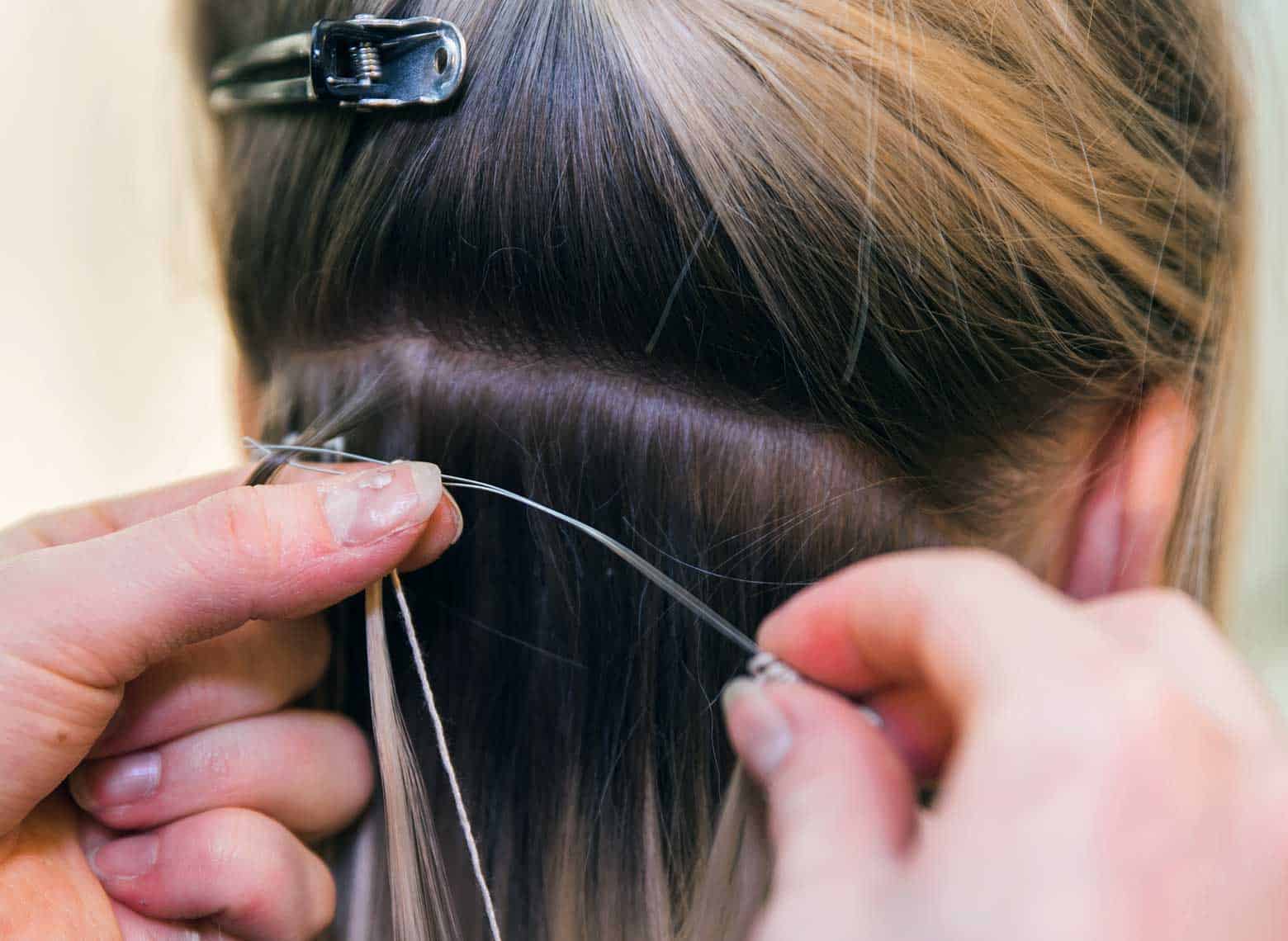
Hand-tied extensions involve a series of hand-tied hair wefts that are secured into your natural hair with beaded attachment points. The wefts are sewed in either with cotton yarn or string.
Installation
The application of hand-tied extensions is a bit more technical than the other methods and can take as long as five hours. Each weft needs to be sewn into each row until they’re perfectly fitted. Once your hair is covered, you can keep your extensions in for six months or more. However, you’ll need to have them repositioned every six to 10 weeks as your hair grows.
Pros of Hand-Tied Extensions
No heat or hair balm is involved in the installation process. It’s also a great method if you want a look that’s secure but doesn’t involve braids, hair balm, or heat.
Cons of Hand-Tied Extensions
This is another method that isn’t ideal if you don’t want to spend a lot of time in the salon. This technique also requires an experienced stylist, so you’ll need to do some vetting to find the right Pro.
Wigs
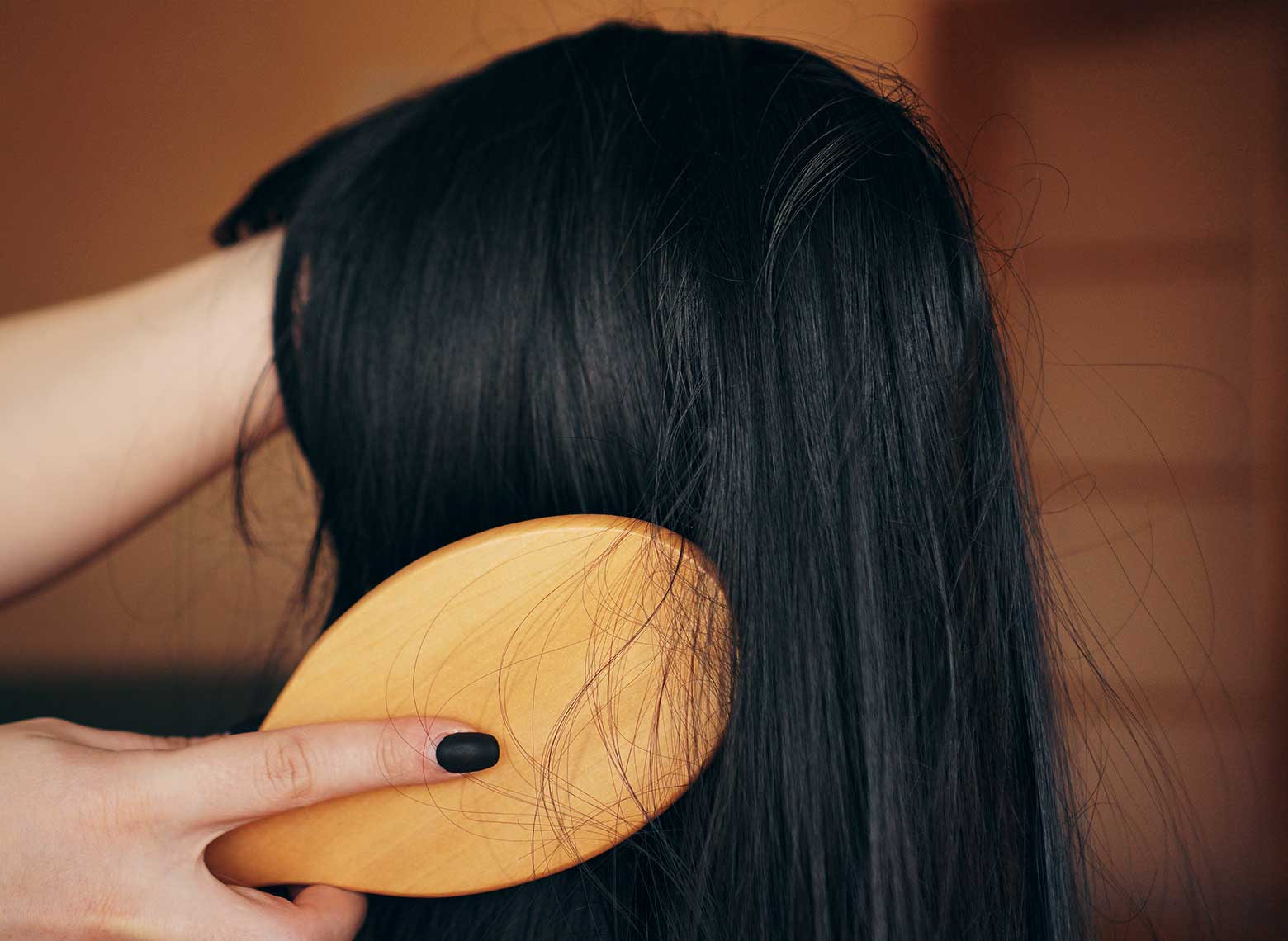
You can wear wigs with all types of hair. For example, you can have long and full wigs even if you have short and thin natural hair. They come in many styles and colors so you’re sure to find one you like. Unlike extensions, wigs cover your entire head.
Installation
Installing a wig is quite straightforward and you can do it by yourself. All you need is bonding balm, adhesive tapes, or clip-ins. It can take up to 15 minutes to put on a wig. A human hair wig can last for up to a year if properly maintained, but synthetic wigs will not last as long. You can also choose whether you’d like to use a wig cap for your wig.
Pros of Wigs
You can take your wig off and on without spending time or money at a salon. Easy removal makes it easier to maintain and clean your natural hair.
Cons of Wigs
Since wigs come in one piece, you’ll need to style and adjust it so it looks natural on you. It can also get hot and a little uncomfortable under the wig during warm months.
Synthetic Hair vs. Human Hair Extensions
Hair extensions are made of either synthetic or human hair. Both types come with their own pros and cons when it comes to factors like price and quality.
Synthetic hair extensions are made out of materials that imitate natural hair. Even though they come in different varieties, they are generally stiff and coarse to the touch. They don’t have many styling options since heat damages most synthetic hair. This type of hair extension is typically cheaper than human hair but won’t last as long as human hair extensions. Synthetic hair works if you’re okay with sticking with a specific look, color, and texture.
Human hair extensions are made with real human hair. They’re a bit easier to blend with your hair since it has a similar texture. If you are looking to style your hair more, consider getting a human hair extension because it’s also easier to style human hair compared to synthetic hair. Unlike synthetic hair, you can dye the hair color, apply heat styling tools to it, and also spend more time outside without worrying about damaging the hair. Since it is real hair, you have more freedom to style it as opposed to a particular synthetic look that is already designed.
There’s a wide range of hair extension options to pick from. With the right extensions, you can achieve the hair length and volume you wish for. The choice of hair extension you make will depend on what look you’re trying to achieve, how long you intend to have it on, and your hair type. A Pro hair stylist can go over your options with you to help you decide what type of extensions you should try. Talk to a Pro near you today for personalized advice on your next look.
Hair Extension Aftercare
Since there are so many different types of hair extensions, there are also many ways to focus on aftercare. Once you have your new look, you may need to maintain it with different oils, sleep carefully, and avoid heat styling tools. Additionally, when it is time to remove the extension you may need
